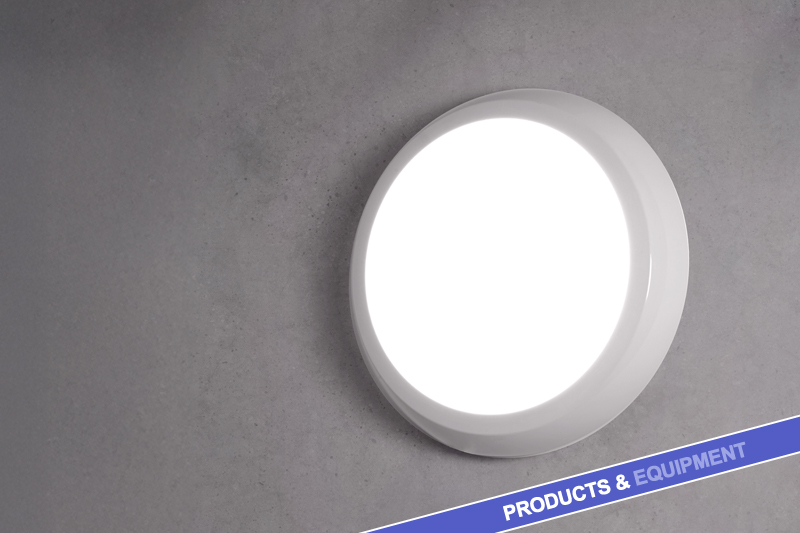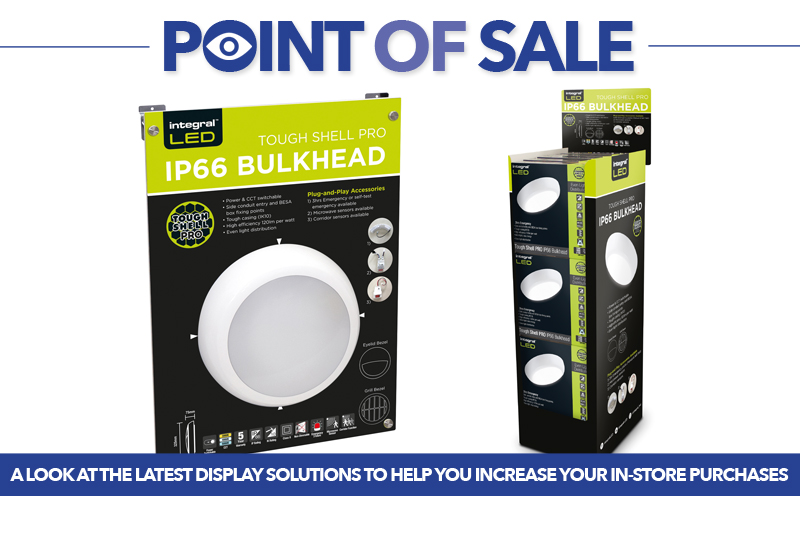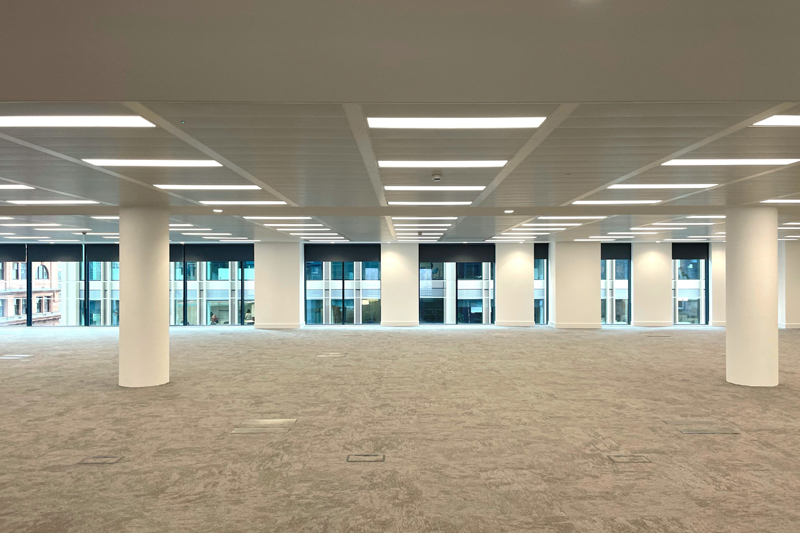Integral LED recently moved to a new warehouse in Calverton, Nottingham to meet the needs of their expanding operations.
The facility was in need of a full lighting refurbishment and improved efficacy and longevity were a paramount concern.
Challenges and considerations
There were multiple challenges to overcome in finding suitable lighting solutions for the new scheme. Luminaires needed to be carefully selected to accommodate narrow racking aisles and multiple functional areas, thoughtfully curated to reduce glare and wasted light at high levels. All lighting needed to be hard-wearing and reliable reducing maintenance whilst significant thought was also given to control options and sensors to enhance efficiencies.
Optimising lighting
Within the general lighting scheme, a range of new highly efficient high bays luminaires was chosen for installation within the warehouse racking area and above the mezzanine. Chosen for its high IK10 impact resistance, in-built Zhaga 18 plug & play socket and models with differing lengths and beam angles, the Integral LED Vector Max Linear High Bay offers an exceptional efficacy of 180lm/W for its compact size.
0.6m 150W Vector Max luminaires were installed throughout the internal aisles whilst for the outer perimeter and the mezzanine level 0.3m 80W luminaires were installed, taking advantage of the upper level windows and available natural light. All Vector Max luminaires installed featured an asymmetrical 30×70° beam angle, perfect for the spaces between warehouse racking.
Under the mezzanine level, rugged IP65 and IK08 4ft long Integral LED Vapourlite Non-Corrosive battens were chosen, offering power and CCT switching capabilities adjustable to suit the needs of the installation.
Motion sensors were also crucial to creating an efficient lighting scheme with both Microwave and PIR (Passive Infrared) options tested. PIR sensors were chosen for high-traffic areas such as goods in and packing and the perimeter areas of the warehouse floor, whilst Microwave sensors provided good detection in the central aisles and ensured lighting was available when required.
A separate emergency lighting scheme, using Integral LED 1500lm Self-Test Emergency Bulkhead luminaires, was installed to ensure regulation compliance and safe egress from the building. This is being covered by a stand-alone case study and excluded from the ROI calculations of the lighting scheme.
The results
During the renovation, all luminaires were switched from fluorescent to LED.
The previous installation consisted of:
- – 170x 5ft 4 lamp fluorescent high bays (80W lamps)
- – 64x 4ft twin lamp fluorescent battens (36W lamps)
The new installation consisted of:
- – 82x 0.3m Vector Max High Bay
- – 88x 0.6m Vector Max High Bay
- – 64x 4ft Vapourlite Battens
In doing so Integral LED managed to save a whopping £28,477.18 on energy costs per annum and will see a return on investment in 4 months. The switch also allowed Integral LED to save 81,363kWh of electricity and 21,561kg of carbon emissions every year.
For related articles, click here





